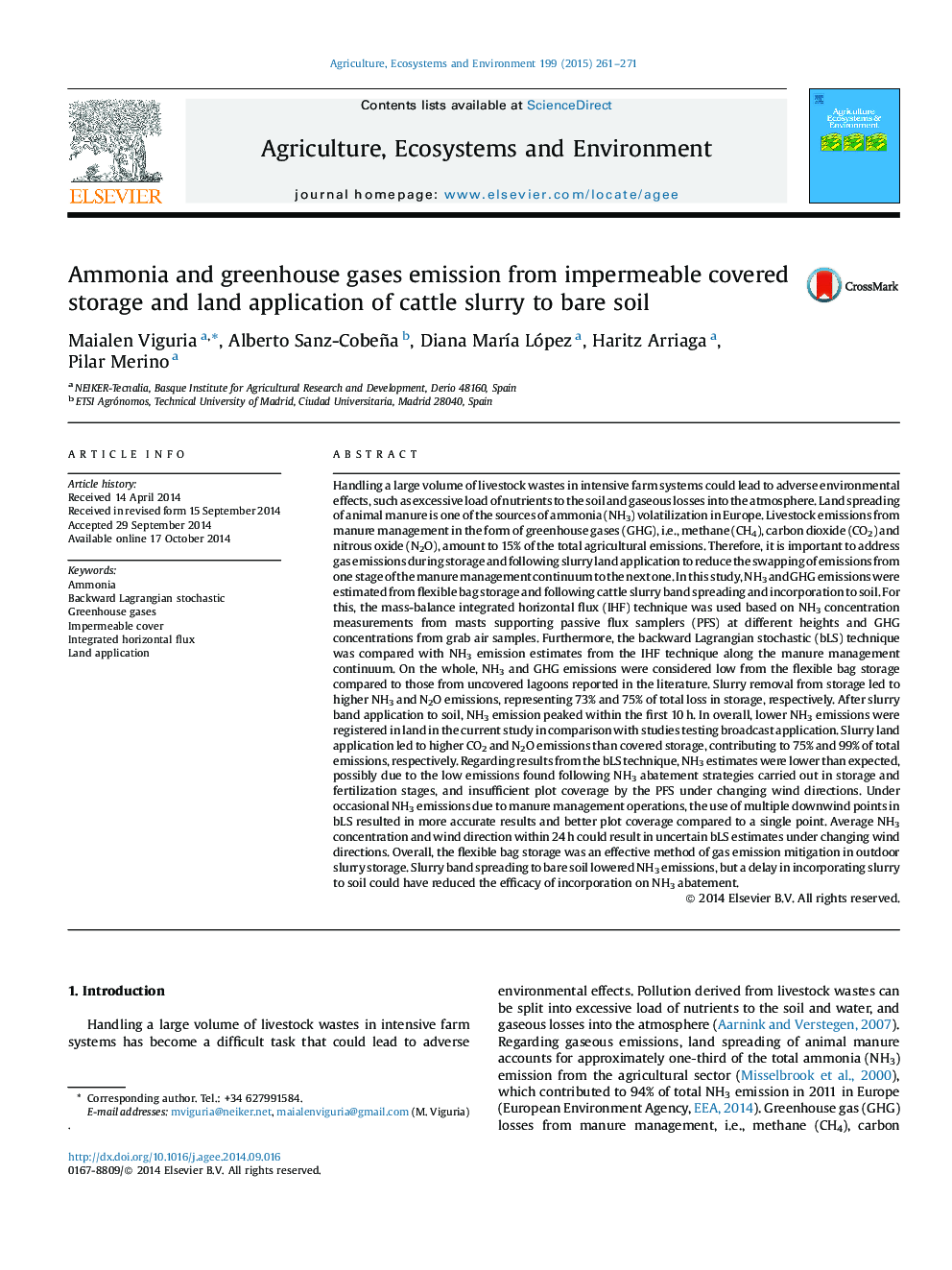| کد مقاله | کد نشریه | سال انتشار | مقاله انگلیسی | نسخه تمام متن |
|---|---|---|---|---|
| 2413865 | 1552053 | 2015 | 11 صفحه PDF | دانلود رایگان |
• Gaseous emissions were measured from impermeable covered storage and slurry land application.
• Two techniques were compared for NH3 emission estimations: IHF and bLS techniques.
• The flexible bag storage was an effective method of gas emission mitigation.
• A delayed incorporation reduced the efficacy of slurry application on NH3 abatement.
• Multiple downwind points in bLS showed accurate estimates and better plot coverage.
Handling a large volume of livestock wastes in intensive farm systems could lead to adverse environmental effects, such as excessive load of nutrients to the soil and gaseous losses into the atmosphere. Land spreading of animal manure is one of the sources of ammonia (NH3) volatilization in Europe. Livestock emissions from manure management in the form of greenhouse gases (GHG), i.e., methane (CH4), carbon dioxide (CO2) and nitrous oxide (N2O), amount to 15% of the total agricultural emissions. Therefore, it is important to address gas emissions during storage and following slurry land application to reduce the swapping of emissions from one stage of the manure management continuum to the next one. In this study, NH3 and GHG emissions were estimated from flexible bag storage and following cattle slurry band spreading and incorporation to soil. For this, the mass-balance integrated horizontal flux (IHF) technique was used based on NH3 concentration measurements from masts supporting passive flux samplers (PFS) at different heights and GHG concentrations from grab air samples. Furthermore, the backward Lagrangian stochastic (bLS) technique was compared with NH3 emission estimates from the IHF technique along the manure management continuum. On the whole, NH3 and GHG emissions were considered low from the flexible bag storage compared to those from uncovered lagoons reported in the literature. Slurry removal from storage led to higher NH3 and N2O emissions, representing 73% and 75% of total loss in storage, respectively. After slurry band application to soil, NH3 emission peaked within the first 10 h. In overall, lower NH3 emissions were registered in land in the current study in comparison with studies testing broadcast application. Slurry land application led to higher CO2 and N2O emissions than covered storage, contributing to 75% and 99% of total emissions, respectively. Regarding results from the bLS technique, NH3 estimates were lower than expected, possibly due to the low emissions found following NH3 abatement strategies carried out in storage and fertilization stages, and insufficient plot coverage by the PFS under changing wind directions. Under occasional NH3 emissions due to manure management operations, the use of multiple downwind points in bLS resulted in more accurate results and better plot coverage compared to a single point. Average NH3 concentration and wind direction within 24 h could result in uncertain bLS estimates under changing wind directions. Overall, the flexible bag storage was an effective method of gas emission mitigation in outdoor slurry storage. Slurry band spreading to bare soil lowered NH3 emissions, but a delay in incorporating slurry to soil could have reduced the efficacy of incorporation on NH3 abatement.
Journal: Agriculture, Ecosystems & Environment - Volume 199, 1 January 2015, Pages 261–271
